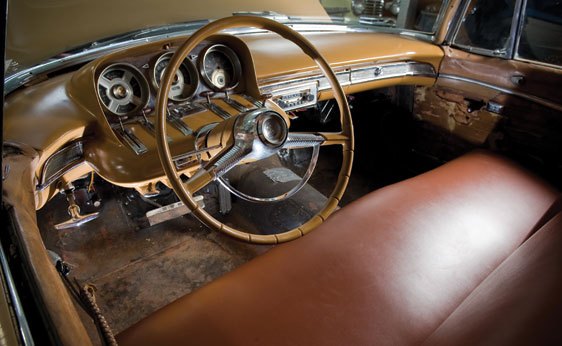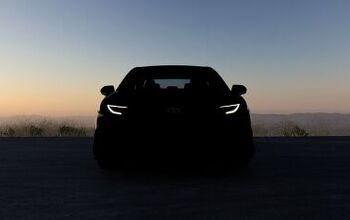2 Views
Relive The Much More Tasteful Fifties; Price Unknown

by
Paul Niedermeyer
(IC: employee)
Published: December 18th, 2009
Share
The great thing about cars from seventies is that they make the cars from the fifties look…better. Here’s a nifty concept car from Chrysler, the 1956 (not so) Plainsman. It was Virgil Exner’s take on the wagon, and gave a glimpse of the direction Chrysler’s radical 1957 models would take. And it can be yours! It’s coming to auction on Jan 22. More shots:

Paul Niedermeyer
More by Paul Niedermeyer
Published December 18th, 2009 4:57 PM
Latest Car Reviews
Read moreLatest Product Reviews
Read moreRecent Comments
- Redapple2 I think I ve been in 100 plants. ~ 20 in Mexico. ~10 Europe. Balance usa. About 1/2 nonunion. I supervised UAW skilled trades guys at GM Powertrain for 6 years. I know the answer.PS- you do know GM products - sales weighted - average about 40% USA-Canada Content.
- Jrhurren Unions and ownership need to work towards the common good together. Shawn Fain is a clown who would love to drive the companies out of business (or offshored) just to claim victory.
- Redapple2 Tadge will be replaced with a girl. Even thought -today- only 13% of engineer -newly granted BS are female. So, a Tadge level job takes ~~ 25 yrs of experience, I d look at % in 2000. I d bet it was lower. Not higher. 10%. (You cannot believe what % of top jobs at gm are women. @ 10%. Jeez.)
- Redapple2 .....styling has moved into [s]exotic car territory[/s] tortured over done origami land. There; I fixed it. C 7 is best looking.
- TheEndlessEnigma Of course they should unionize. US based automotive production component production and auto assembly plants with unionized memberships produce the highest quality products in the automotive sector. Just look at the high quality products produced by GM, Ford and Chrysler!




































Comments
Join the conversation
Holy Schnikes - a two-door full-size wagon! Does the tranny selector reside somewhere between the jet engine throttle controls and the afterburner switches? From Wikipedia: "The name Dagmar Bumpers (and Dagmars) was a direct reference to Dagmar (born Virginia Ruth Egnor) [1] the early 1950s television personality who was as well known for her pronounced cleavage as she was for her dumb blonde character on the program Broadway Open House. Dagmar's physical attributes were further enhanced by low-cut gowns and the shape of her bra cups, which were somewhat conical. Egnor was amused by the tribute." Thanks TTAC's B&B, I learned something on my day off!
I believe that this was badged the Plymouth Plainsman at the time. Plymouth had been the first with an all-steel passenger car station wagon after the war. (The Willys Jeepster was actually the first all-steel wagon, but in those days it was considered a Jeep first and a car second, and suburbanites did not want to drive around in a Jeep. How times change...) While Ford led in total wagon sales in the 1950s, by the late 1950s, Plymouth generally led in percentage of passenger cars sales that were wagons. If I recall correctly, the Plainsman featured the spare tire stowed underneath the passenger-side fender on the OUTSIDE of the car. A metal panel was removed to gain access to the tire. This got the spare out of the car, and allowed for the installation of the rear-facing third seat - a feature offered on the 1957 Plymouth wagons. I also believe that, for 1957, all Chrysler Corporation wagons shared the same basic wheelbase and body, with divisional distinctions maintained through different front clips and taillights. This saved money and allowed Plymouth to brag in its advertising that it offered the biggest wagon of the low-price three (a big selling point in the 1950s).